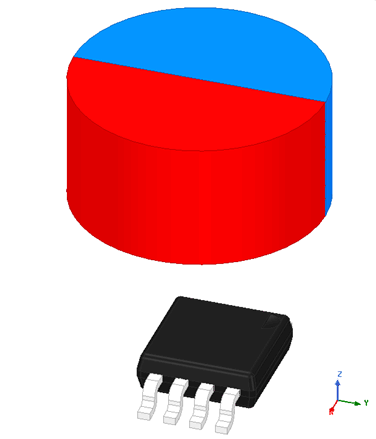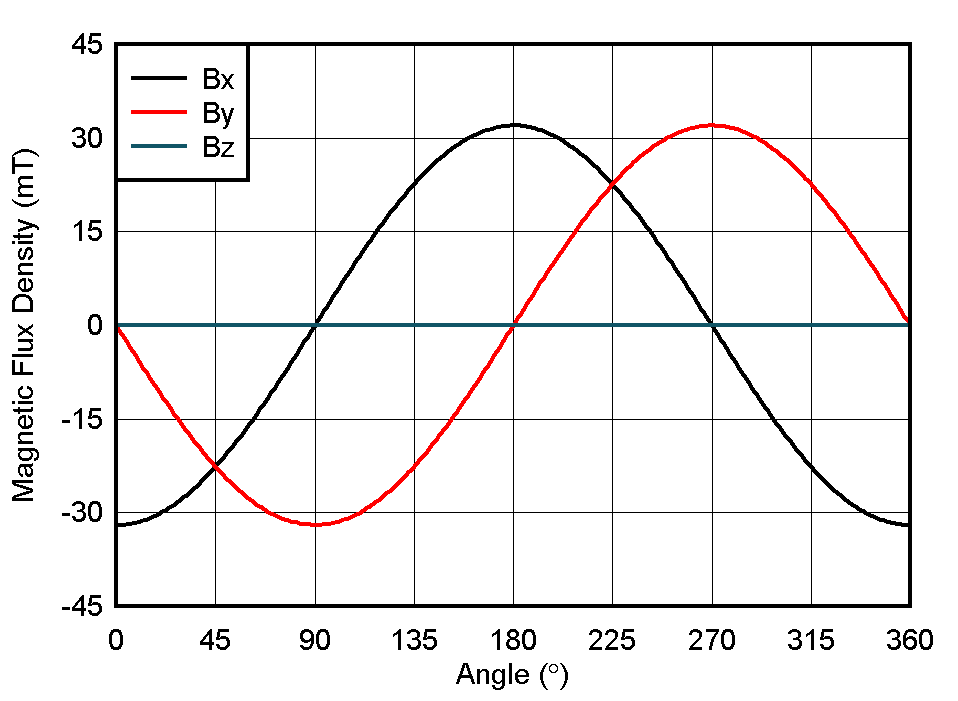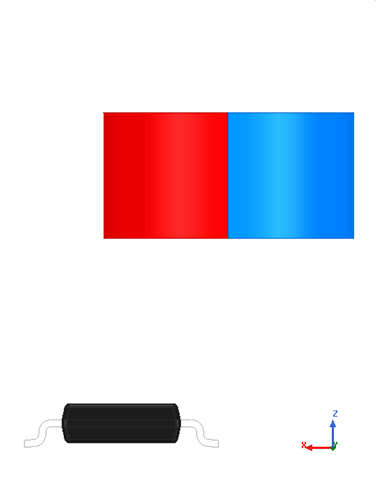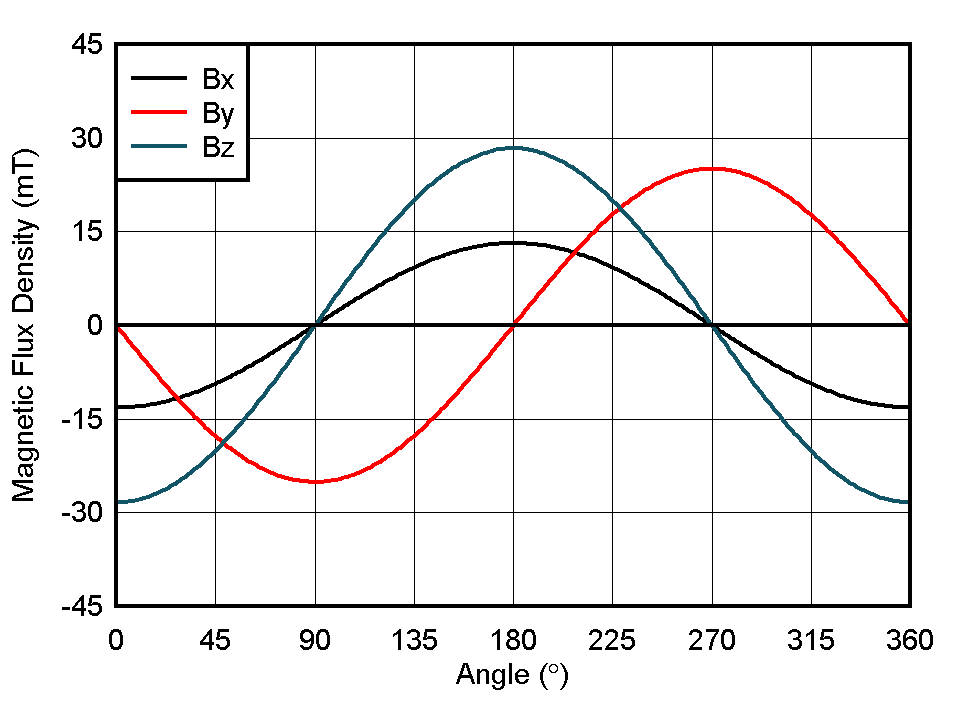SBAA463A january 2021 – april 2023 TMAG5170 , TMAG5170-Q1 , TMAG5170D-Q1 , TMAG5173-Q1 , TMAG5273
2.1 Simplified Mechanical Placement
TMAG5170 device offers a wide degree of mechanical placement options. Typically, there are three primary configurations which are referred to as In-Plane, On-Axis, and Off-Axis.
In-Plane alignment, Figure 2-1, describes the configuration we have already shown where the sensor is aligned vertically to the center of the rotating magnet and is therefore placed coplanar with the magnet polarization.
On-Axis placement refers to the sensor being placed along the axis of rotation for a diametric magnet as shown in Figure 2-3. With the magnet rotating about the Z-axis, the sensor location could accordingly be placed along the Z-axis immediately above or below the magnet. The same air gap from the first example is maintained, but the displacement is downward in the Z-direction instead of outward in the Y-direction.
 Figure 2-3 On-Axis Placement
Figure 2-3 On-Axis PlacementHere the response for the X and Y components of the magnetic field are perfectly matched. This placement offers the easiest implementation for a multi-axis sensor as the inputs are naturally matched in amplitude and 90º out of phase.
 Figure 2-4 On-Axis Field Components
Figure 2-4 On-Axis Field ComponentsThe last option is Off-Axis placement, which could be any other position within reasonable proximity of the magnet. For instance, suppose we continue to maintain the vertical air gap between the magnet and sensor, but now move the sensor to a location directly beneath the outer circumference of the magnet as shown in Figure 2-5.
 Figure 2-5 Off-Axis Placement
Figure 2-5 Off-Axis PlacementIn this position we observe a portion of the magnetic field in each X, Y, and Z axes. Both the X and Z component of the field vector are 90° out of phase from the Y component.
 Figure 2-6 Off-Axis Field
Components
Figure 2-6 Off-Axis Field
ComponentsHere it is best to select the Y and Z components of the magnetic field vector for angle calculations. These inputs will provide the greatest signal-to-noise ratio and are more closely matched than X and Y.